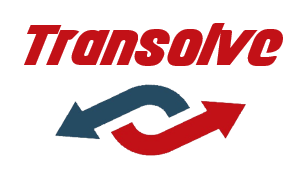On Tuesday 22 September, I gave a guest lecture in Transportation Management to third-year Logistics & Economy students at the HAN University of Applied Sciences. Based on my knowledge and experience I gave my view about the principles of transportation management.
Background
The business case was about BSN Medical, manufacturer of healthcare products, being part of Essity. BSN has outsourced part of their supply chain in Europe to CEVA Logistics. I was responsible for the transport management during preparation, start-up and steady-state operation.
Scope
BSN medical has production facilities in Germany, France, Mexico, Pakistan, South Africa, Colombia, New Zealand and the U.S, operating all over the world via affiliates, joint ventures and distribution agents. The contract consists of inbound transportation from BSN Medical production locations and bought in finished goods from suppliers mainly from Asia. The default transport mode is sea freights to the RDC warehouse in the Netherlands. Out of this RDC replenishment will be shipped to DC’s globally. Replenishment with Europe will be sent by truck to DC’s in the UK, France, Spain and Italy. DC’s will organize the local distribution.
The RDC in Venray NL will take care of distribution in the Benelux, Germany, Austria, Switzerland and the Nordics. Distribution to customers, such as hospitals, pharmacists and wholesalers, will executed by courier services.
Transportation Management
The objective of transportation management is to optimize transport solutions and improve the processes in order to serve the customer the best. The result should be more cost-efficient and against equal or better performance as before the outsourcing.
Transport cost analysis
In order to explore freight cost improvement, you need to retrieve current transport costs and shipping profile. If and how to improve transport cost and still maintain current performance will be based on the historical data and current set up.
Freight Tender
The most common improvement process is to set up a freight tender and send a request for quotation (RFQ) to interested carriers. Due to the buying power of the logistics service provider, a freight tender is a gainful tool for cost improvement.
Network improvements
An option to make use of smarter transport solutions is adapting the transport modality based on volume. For instance, use groupage carriers instead of courier in case of pallet shipments. Another improvement that I explored was a consolidation opportunity. Two practical examples were milk-runs for large customers within driving restrictions and distance. Also round trips from production locations and DC’s.
Reporting
Another USP is visibility and reporting opportunities. Through a BI tool, in this case QlikView, we created a report with full visibility of operational flows, as well as financials. On a daily base, we were able to monitor carrier performance and zoom in on country, region or zip-code. Also, all transportation costs are integrated into a Transport Management System. This information enables reporting of financial details, such as cost per kg or M3.
Invoice validation
Finally, invoice matching is an added value for transportation management. All the carrier rates are uploaded in the TMS. As soon as a shipment order is created the estimated transport cost will be calculated based on weight and dims against the available rate cards. After validation, an invoice line will be approved or disputed. This fully automated process will seamlessly process freight invoices. This activity generates a cost-saving due to less effort and correct invoicing.
